Home-cured gravlax is a surprisingly simple to make and delicious appetizer for parties and holiday gatherings.
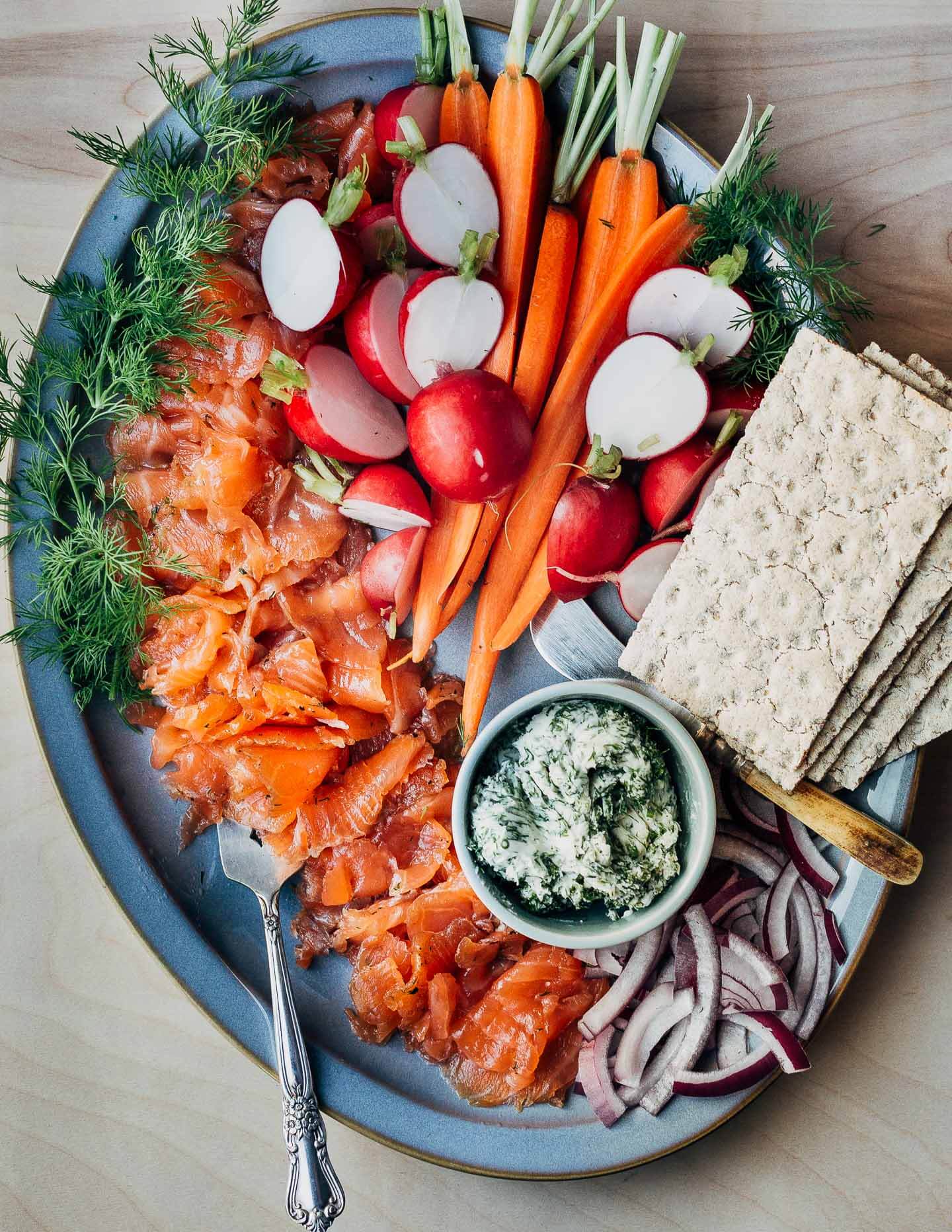
Get the newsletter
Are you signed up for the Right Now newsletter? It hits inboxes twice a week with exclusive recipes and seasonal ingredient inspiration. Subscribe today!
For this year’s holiday party circuit, I’ve reprised a favorite that I used to make every year: homemade gravlax. Paper-thin slices of delicate home-cured salmon are perfect for parties, sandwiches, and tidy little cracker bites. Here, I went with a more casual presentation, serving the gravlax with herbed compound butter, sliced radishes and carrots, sliced red onions, and rye crackers.
What is Gravlax?
Gravlax is a Nordic method for making home-cured salmon. Generally speaking, a skin-on salmon filet covered in a mixture of salt, sugar, and fresh dill that’s cured in the fridge for a few days. The salt and sugar penetrate and cure the fish, firming the flesh and imbuing it with flavor. Once cured, the salmon is sliced paper thin and served with mustard-dill-sauce, red onions, and crackers or toasts. Here, I opted for salted dill butter in place of the traditional sauce. Gravlax will last about three days in the fridge.
The next question is: is gravlax safe to eat? Yes! – with a few caveats. Start with the freshest possible fish. Wild Pacific salmon is ideal, but a beautiful Atlantic filet will work, too. The safest option is to buy previously frozen salmon, since commercial-grade freezers are cold enough to kill any parasites that might be in the fish. If you’re using fresh fish, be sure to purchase from a trusted fish monger who has checked for evidence of parasites.
And like all raw fish, folks who are pregnant may want to steer clear.
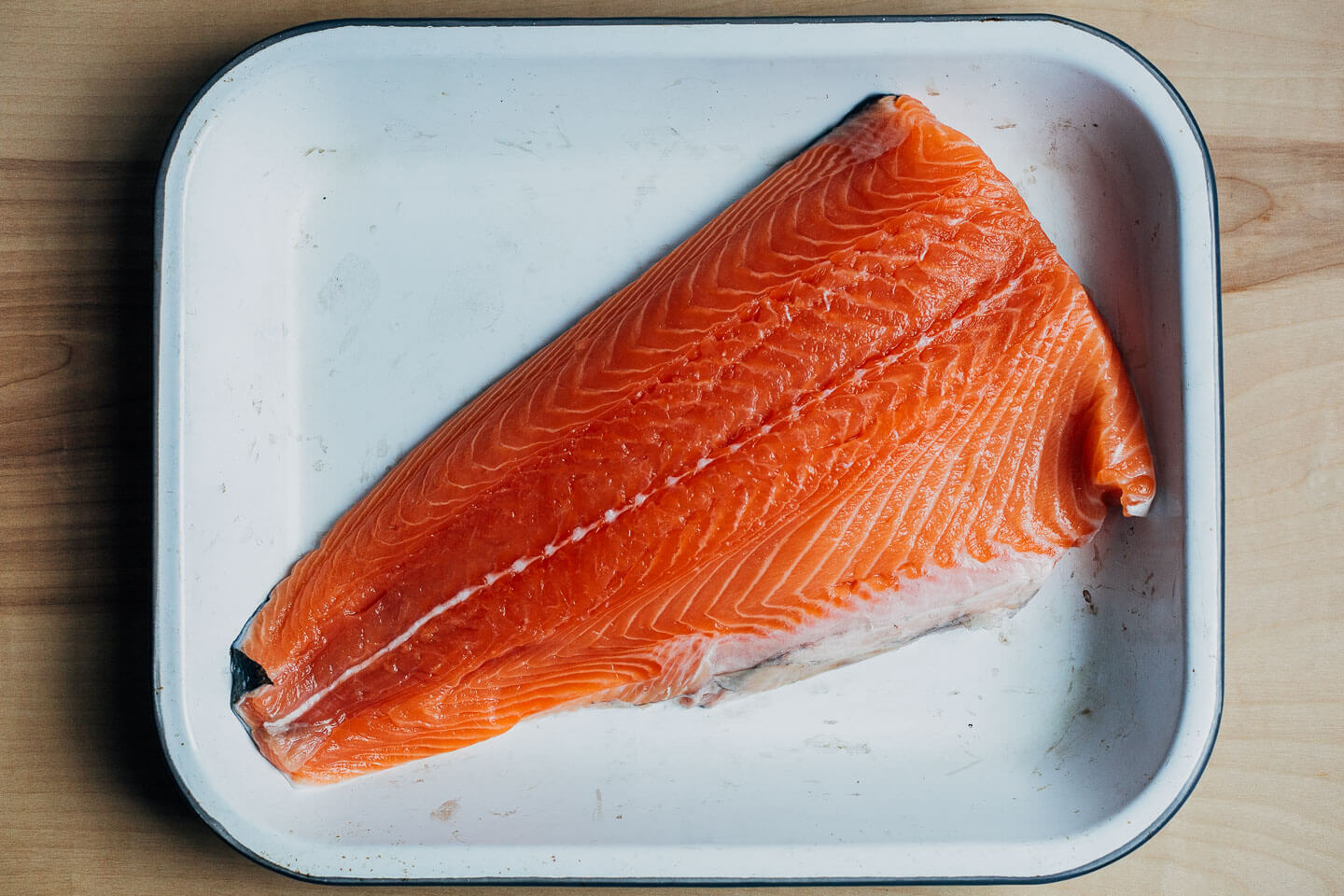
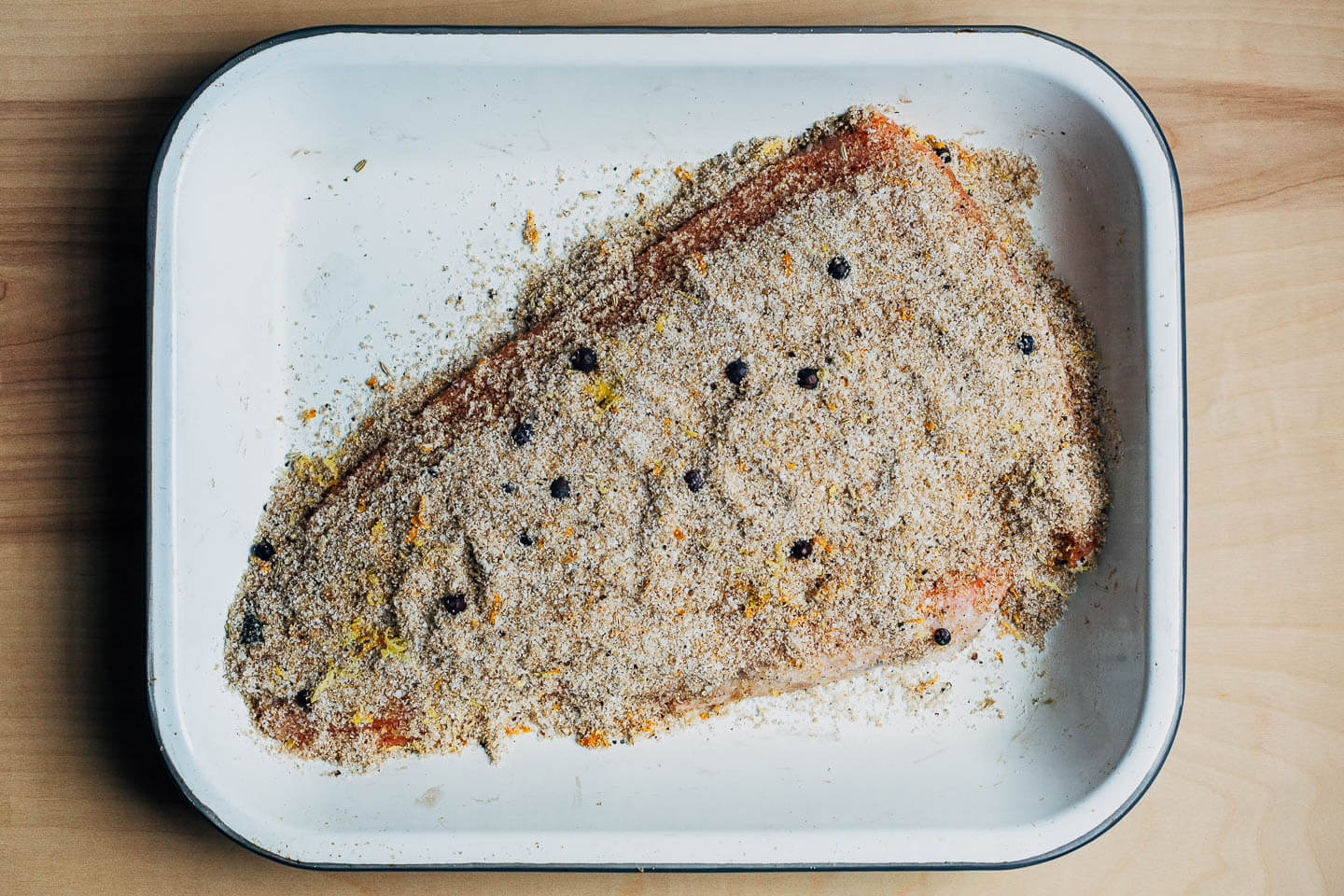
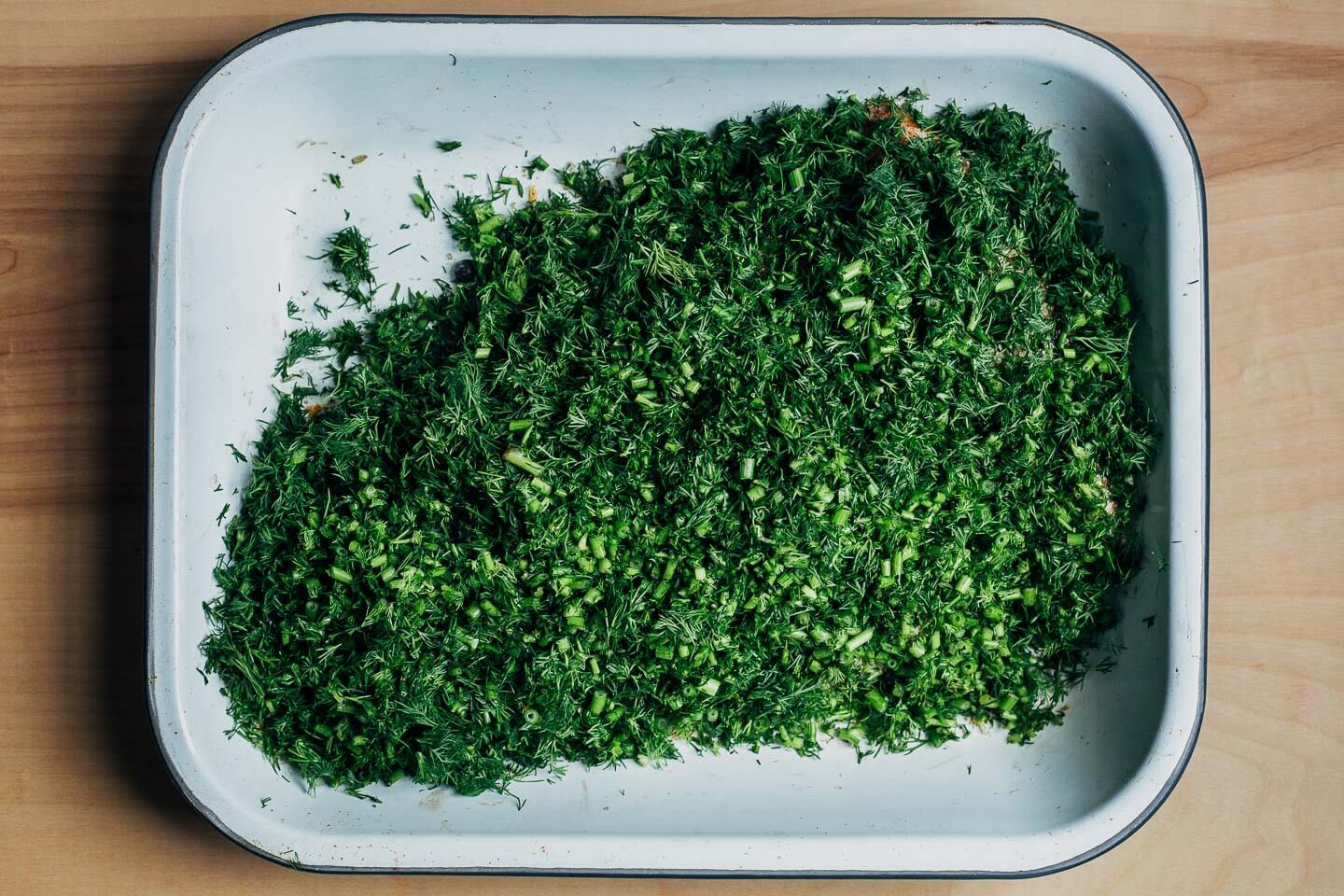
How Long Does It Take to Cure?
Depending on whether you have Pacific or Atlantic salmon and your preferred cure, two to three days.
Play with Flavors!
Beyond the basics of salt, sugar, and fresh dill, there’s lots of room to experiment with flavors. Here, I added lemon and orange zest, crushed fennel seeds, crushed juniper berries, and black pepper. Other add-ins can include a splash of Aquavit or vodka, pink peppercorns, mustard seed, coriander, cumin, caraway, or lime zest.
One note – while citrus zest is fine to use, citrus juices can “cook” the salmon and mess up the flavor and the cure, so please steer clear of any citrus juice.
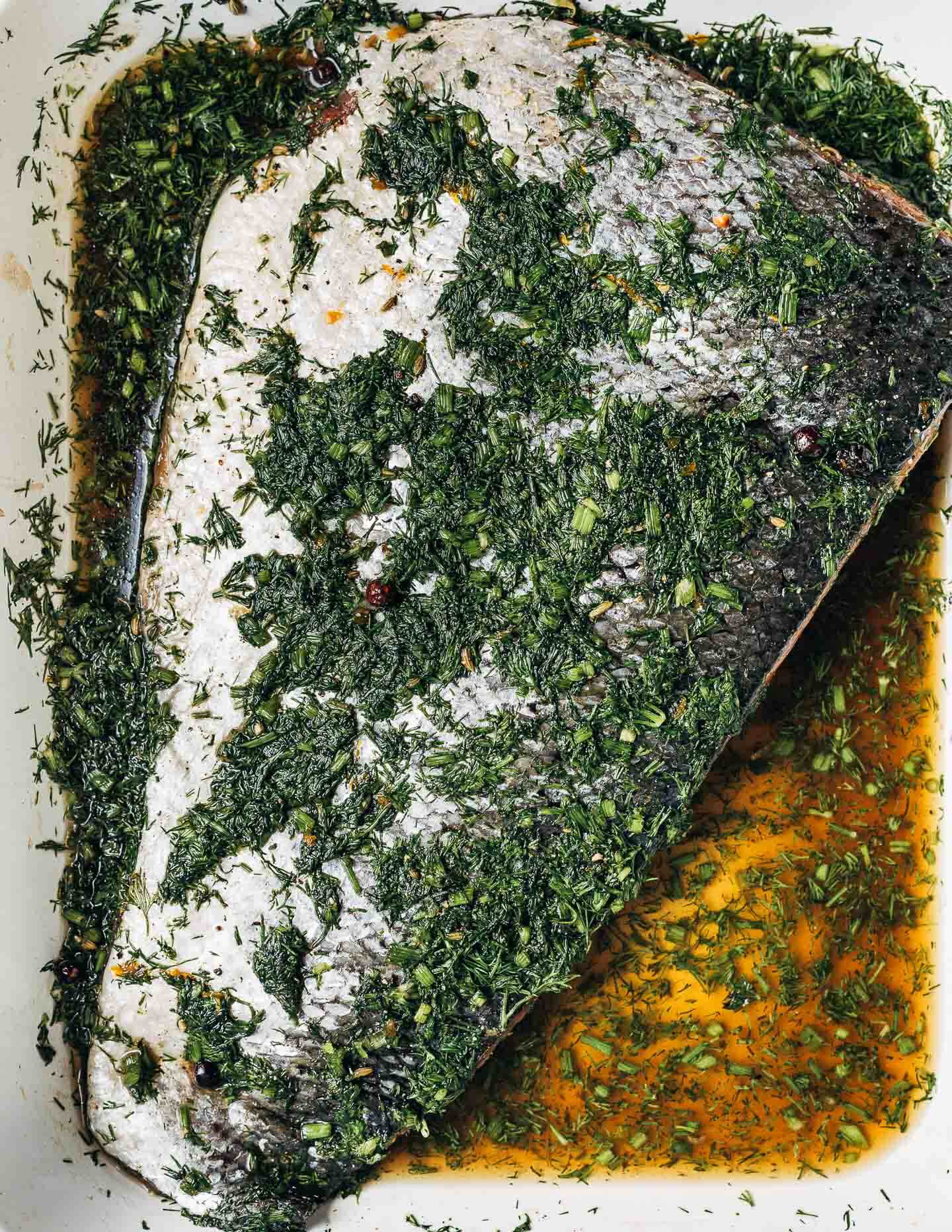
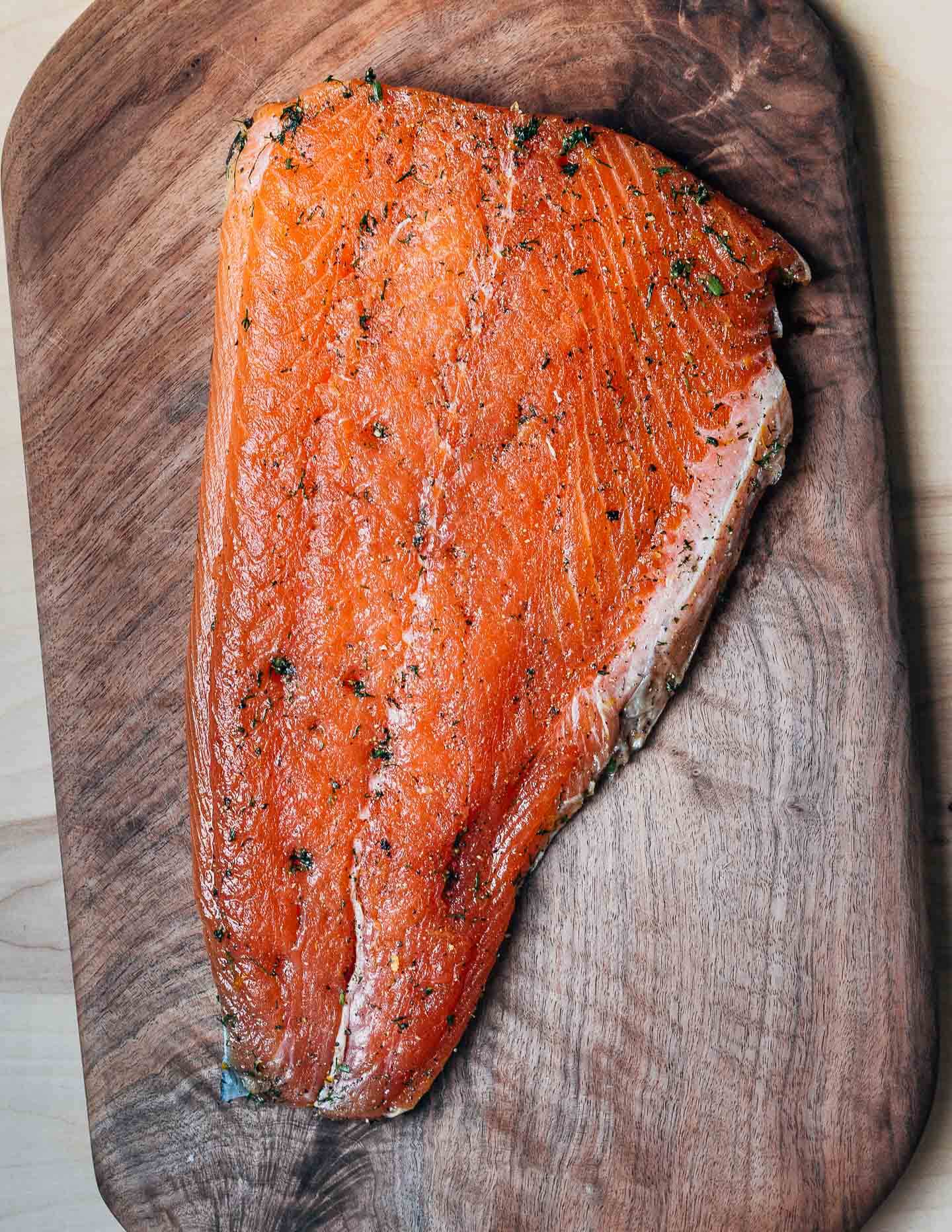
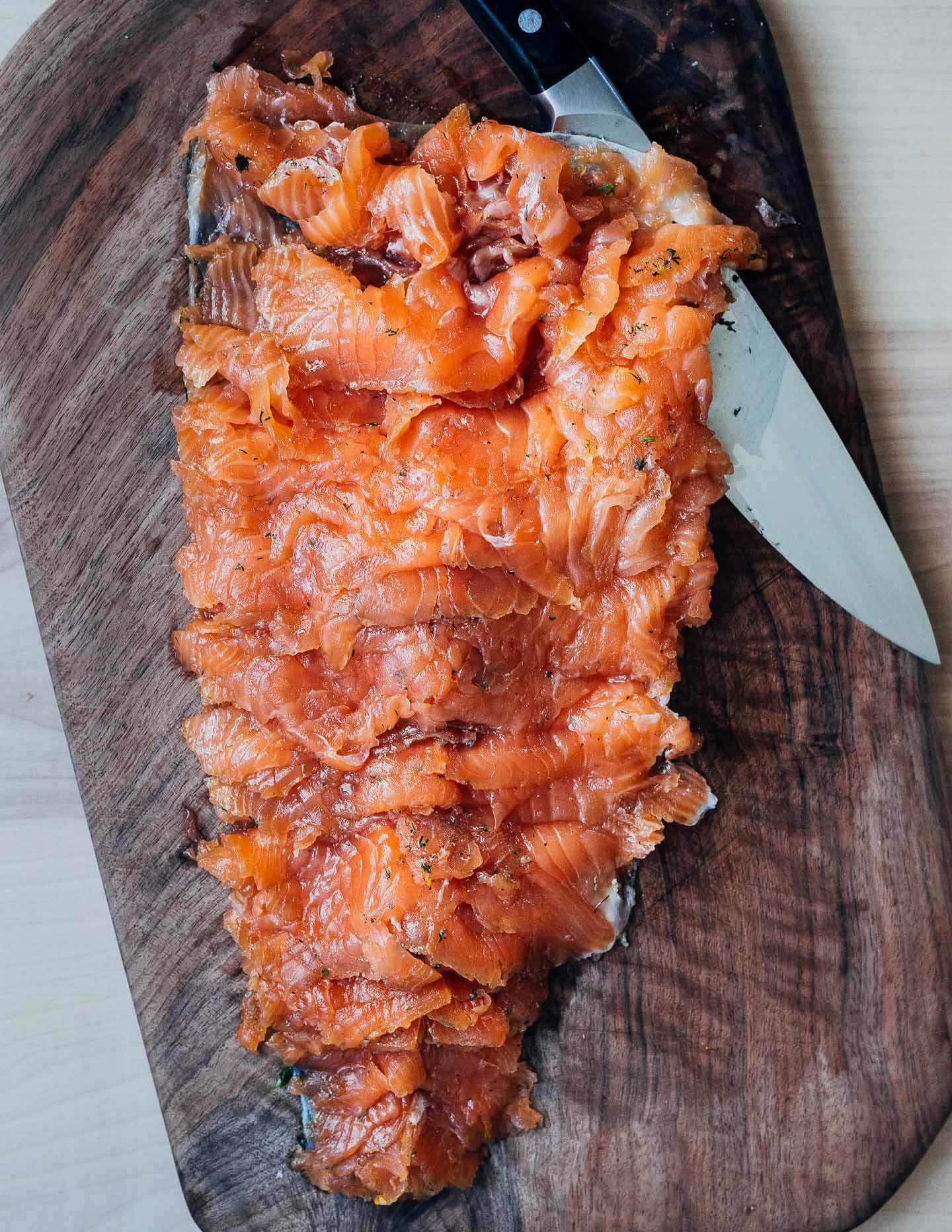
Gravlax can be served and eaten just as you might serve smoked salmon. Here, I went with salted dill butter, rye crackers, sliced radishes and carrots, red onions, and fresh dill. Other additions can include traditional mustard-dill sauce, toasts, sliced lemon, pickles, or capers.
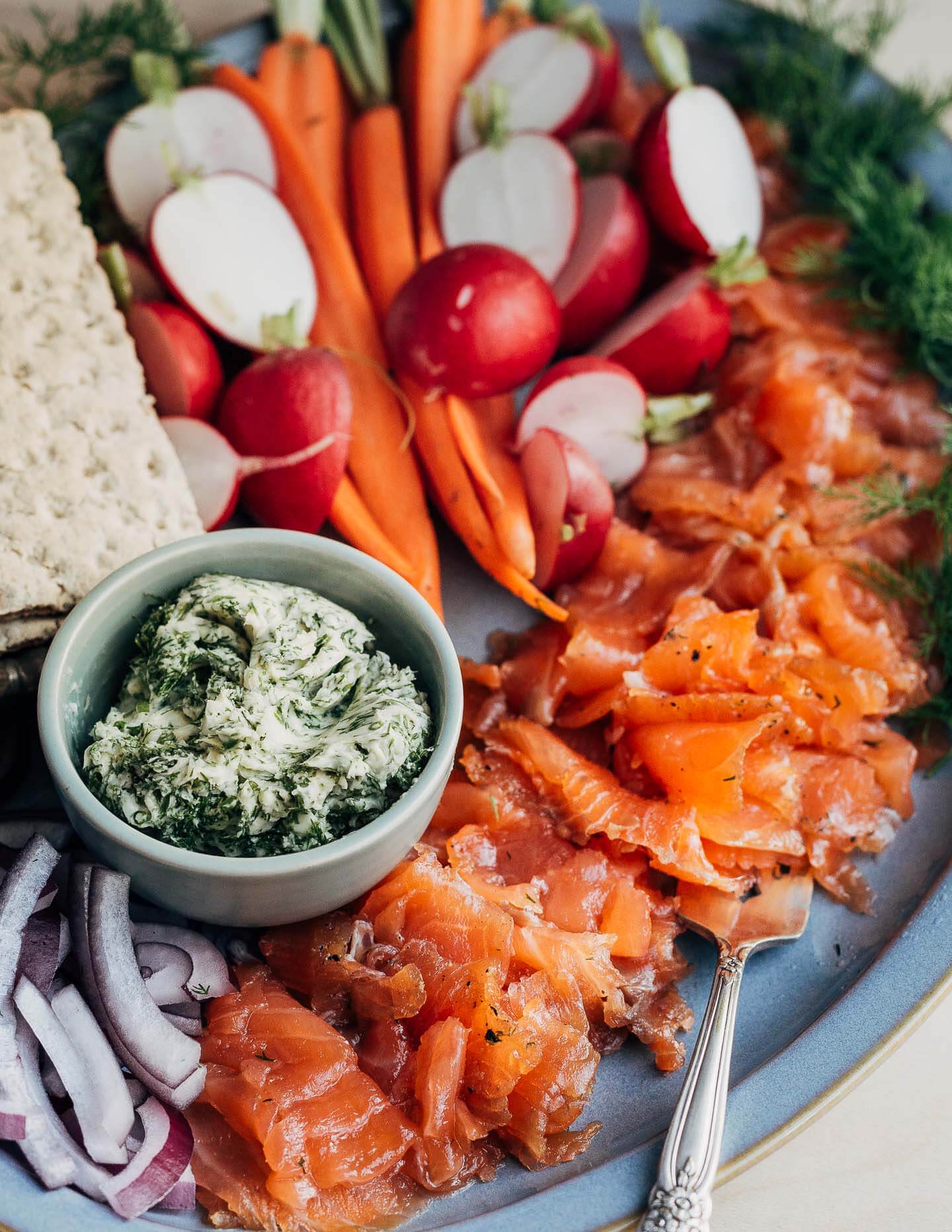
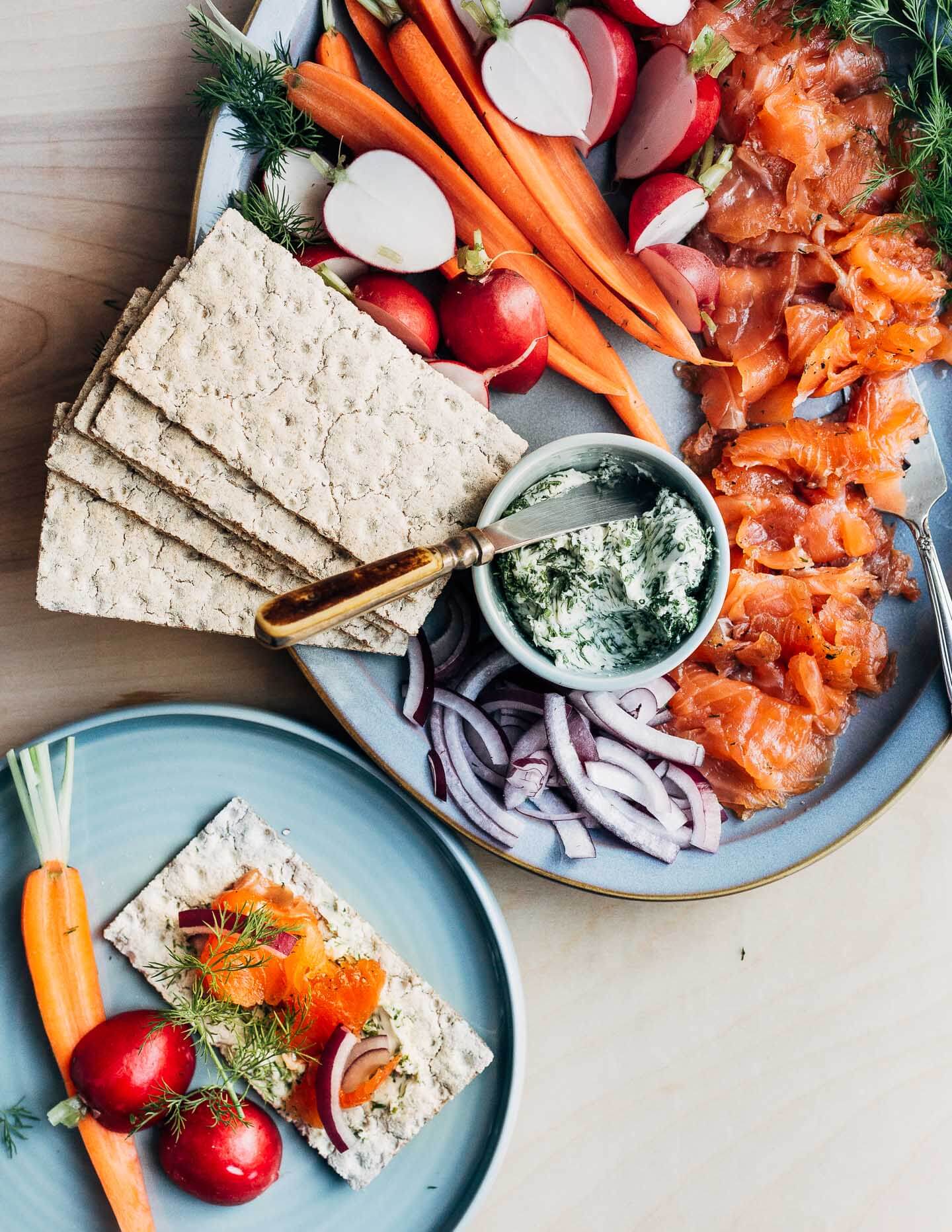

Home-cured gravlax is a surprisingly simple to make and delicious appetizer for parties and holiday gatherings.
Note: This recipe calls for kosher salt. My preferred brand is Diamond Crystal. Please don’t use table salt here, as it is too dense and overly salty.
- 1 large bunch fresh dill, washed, dried, and chopped
- 3 pound skin-on salmon filet
- 1/2 cup Diamond Crystal or another brand of kosher salt (table salt is too dense and salty to use here!)
- 1/4 cup packed brown sugar
- 2 tablespoons freshly ground black pepper
- 1 teaspoon fennel seeds, crushed (optional)
- 1 teaspoon juniper berries, crushed (optional)
- Zest of 1 orange (optional)
- Zest of 1 lemon (optional)
-
Rinse and pat the salmon dry. Run clean hands over the salmon and feel for pin bones and use kitchen tweezers to remove them. Set out a non-reactive dish large enough to hold the filet, such as a 9 x 13-inch baking dish.
-
In a medium bowl, combine the salt, sugar, pepper, spices, and zest.
-
Set salmon in the baking dish, skin side up. Sprinkle 1/4 of the salt mixture and 1/4 of the dill over top, pressing gently. Flip salmon so it is skin side down and cover with the remaining mixture (it will feel like a lot to pile on top – proceed with confidence!). Top filet with remaining chopped dill. Cover salmon with plastic wrap clinging to the salmon. Set a plate or cutting board, on top of the salmon, and set a 2 - 3 pound weight on top – use large cans or a bag of potatoes. Refrigerate.
-
After 1 day, flip the salmon so it is skin side up. You'll notice the salt and sugar will have liquified, leave the liquid in the dish. Rewrap, add weights back, and refrigerate 1 - 2 days more (1 day for a lighter cure or Pacific salmon, and 2 days for deeper, saltier cure or fattier Atlantic salmon). Salmon is finished curing when the flesh has firmed up and deepened in color.
-
Remove salmon from dish, scrape dill and salt mixture off, and set on a cutting board. Take a moment to sharpen your longest, sharpest carving knife. Start at the tail with knife angled toward the thicker part of the fish, and cut the thinnest slices you can on an almost horizontal diagonal. Each cut should go all the way down to the skin without cutting through it. (This is actually the hardest part, so stay strong!) After slicing, run a knife along the bottom to free slices from the skin. Discard skin. Store sliced salmon in a sealed container in the fridge until ready to serve.
-
To serve, garnish salmon with fresh dill fronds and/or lemon slices. If desired, serve with rye crackers or toasts, herb butter or traditional mustard sauce, red onions, sliced radishes, and pickles.
-
Once cured, gravlax will keep about 3 days sealed tight in the fridge.
Leave a Reply